How to Use London Buses, Getting around London Guide
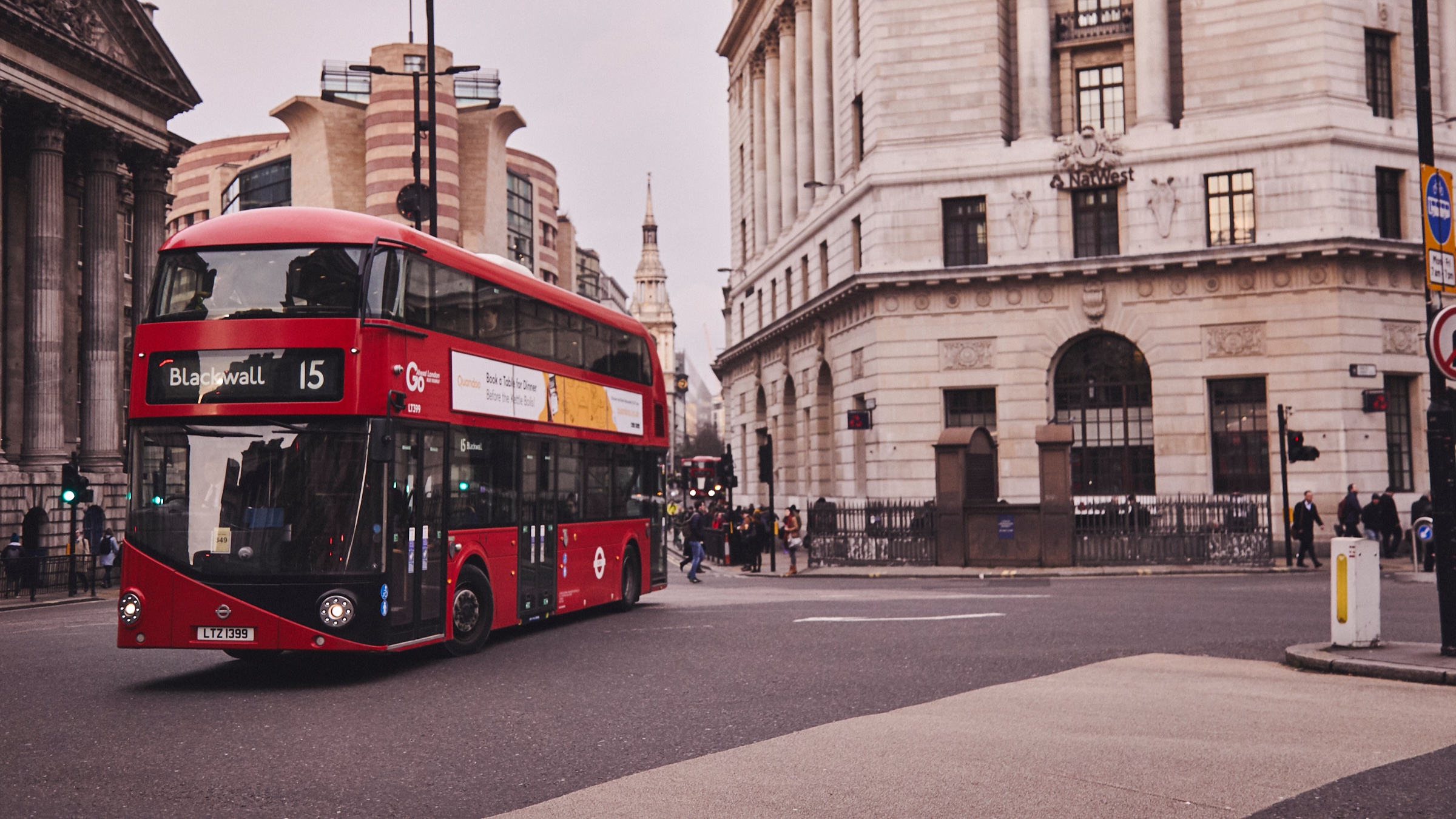
London’s bus system is renowned for its reliability, accessibility, and the iconic red double-decker buses that have become synonymous with the city itself. With over 700 routes, the network is designed to provide comprehensive coverage across Greater London, making it a crucial part of daily life for millions of commuters, students, tourists, and locals. Operating 24 hours a day, London buses are often the preferred choice for those seeking a more scenic journey around the city, especially for tourists eager to catch a glimpse of famous landmarks. Unlike the Underground, buses allow you to see the cityscape, making travel not only functional but enjoyable. Each bus route is clearly numbered and indicated on maps and bus stops, ensuring a straightforward experience even for newcomers. For those looking to explore London further, you can check out our guide on How to Use London Overground, Getting Around London Guide.
Overview of the London Bus Network
The London bus network is structured into different types of services: daytime routes, 24-hour routes, and night buses. The primary network operates throughout the day and usually follows major roads, with many routes passing through central areas and tourist hotspots. Most buses follow consistent schedules, with frequencies varying depending on the time of day. Night buses, often denoted by an “N” before their route number, extend or replace daytime routes after hours, ensuring round-the-clock service. To make the network more user-friendly, London buses are part of the Transport for London (TfL) network, which means you can access updated route information, maps, and real-time tracking on the TfL website or through various apps.
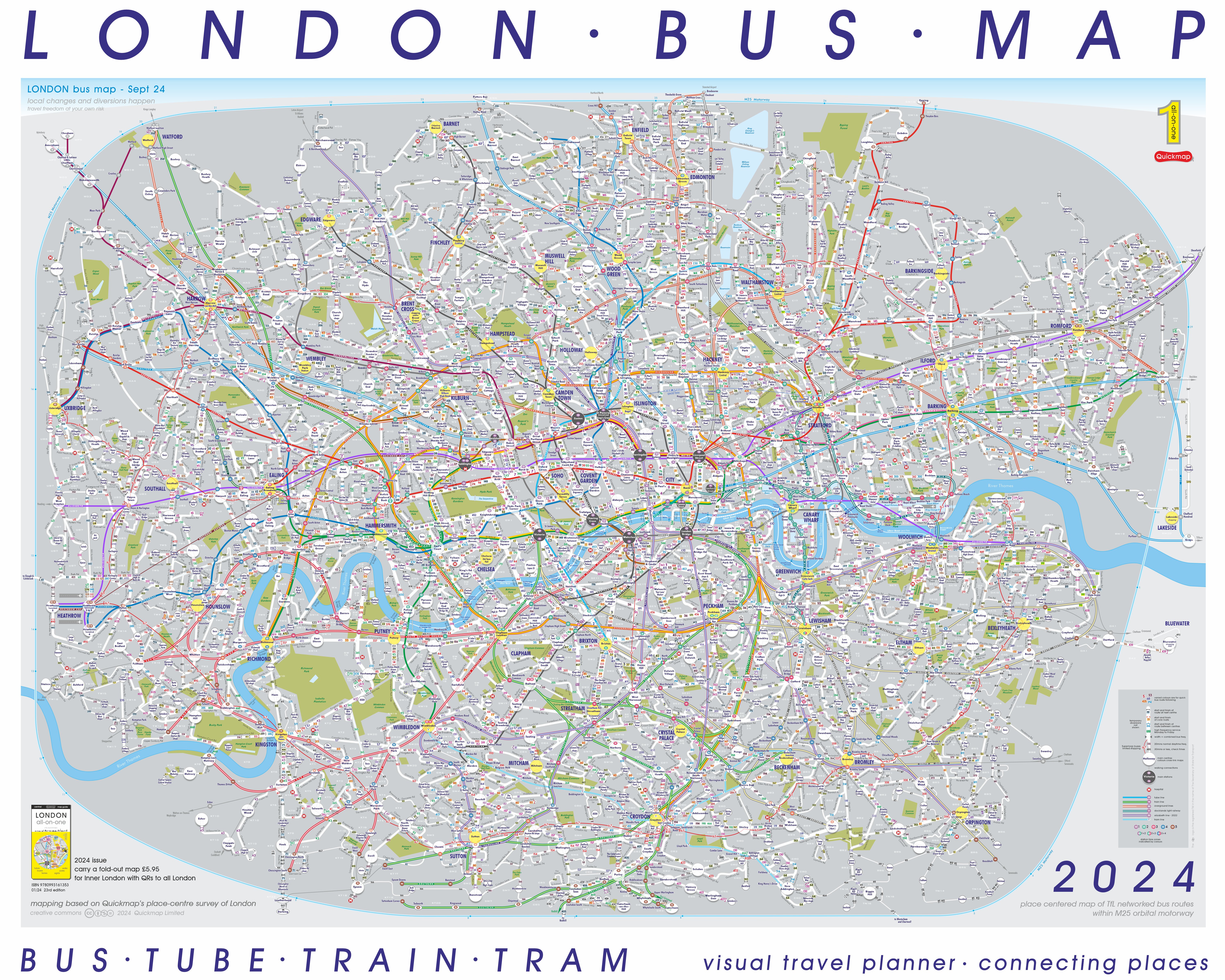
Benefits of Using London Buses
Choosing to travel by bus in London offers several distinct advantages over other modes of transport. For one, buses are significantly cheaper than taxis and can be more convenient for short distances compared to the Underground. Additionally, the extensive bus network reaches areas that the Tube does not cover, providing access to all corners of the city. Buses also offer fare capping with contactless and Oyster cards, meaning you won’t pay more than the daily or weekly limit regardless of how many buses you take. Another benefit is the experience itself—whether it’s the traditional double-decker bus or the sleek, modern models, you can enjoy an uninterrupted view of the city as you travel. London buses are also highly accessible, with features like low floors, ramps, and wheelchair spaces on every vehicle.

When using London buses, consider using Transport for London (TfL)’s journey planner app to maximize your travel efficiency. This tool allows you to check real-time bus arrivals, find alternative routes in case of traffic, and even set reminders for when to get off at your stop. If you’re planning a long day of sightseeing or multiple trips, you can save even more by taking advantage of London’s “hopper fare” scheme, which allows unlimited bus transfers within an hour at no extra charge. This is especially useful for shorter trips and can greatly reduce your overall travel costs.
Planning Your Bus Journey
Efficient planning can help you avoid unnecessary delays and ensure you reach your destination smoothly. Here are the essential tools and tips you need to plan your bus trip in London.
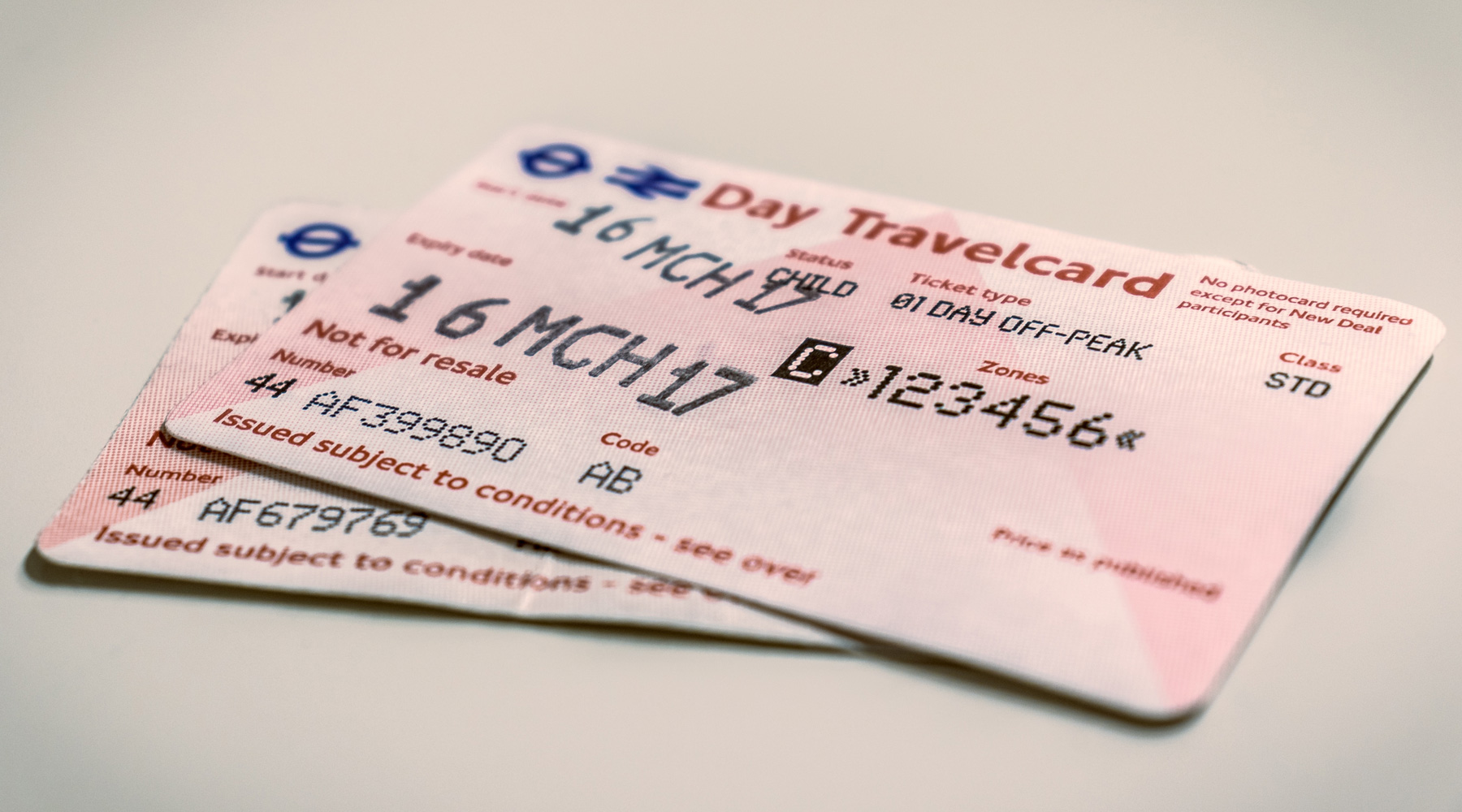
How to Find Bus Routes and Timetables
Navigating the London bus system is simplified with several online resources that provide detailed route information and timetables. The TfL website and app are the most comprehensive options, offering up-to-date schedules, route maps, and even a journey planner tool that suggests the best bus routes based on your starting point and destination. You can input your exact location or use popular landmarks, and the planner will recommend the quickest route with estimated travel times.
- Using the TfL Website: The TfL (Transport for London) website is a one-stop resource for all your travel needs within London. Simply enter where you’re going and where you’re starting from, and the TfL journey planner will provide route options, estimated travel times, and potential disruptions or delays. You can also download printable maps and timetables for offline use.
- Popular Mobile Apps for Route Planning:
- Citymapper: This app is particularly popular among Londoners for its easy-to-use interface and real-time updates. Citymapper provides detailed bus routes, walking directions to the nearest bus stop, and live bus arrival times, making it an invaluable tool for commuters.
- Google Maps: For those already familiar with Google Maps, it’s a convenient option. It shows bus stops, real-time bus arrivals, and route options, with added features like live traffic updates and notifications if you need to change buses mid-journey.
- TfL Go App: TfL’s official app, TfL Go, provides comprehensive details on bus schedules, real-time service updates, and route information, all tailored to London’s transport network.
Understanding London Bus Stops and Signs
Bus stops in London are clearly marked with a roundel—a circular sign with a bus symbol and the stop’s name. Many stops also have maps showing nearby routes and a timetable of scheduled arrivals. London bus stops are categorized by letters, which can be found on the TfL maps, helping you identify your stop with ease. Bus stop names are also announced on the buses themselves, so you’ll always know when your stop is approaching. Additionally, some stops are designated as “request stops,” where buses only stop if there are passengers waiting or someone signals the driver by pressing the “stop” button onboard.
Bus Fare Information
London has a cashless bus system, meaning all payments are made using either an Oyster card, a contactless credit or debit card, or through mobile payment options like Apple Pay and Google Pay. Here’s what you need to know to avoid any surprises:
Types of Payment Options Available
- Oyster Card: The Oyster card is a prepaid travel card that can be loaded with credit and used across London’s entire public transport network. Tapping in at the card reader when boarding allows for quick, contactless payment. Oyster cards can be purchased and recharged at Tube stations, convenience stores, and online.
- Contactless Payment: If you have a contactless debit or credit card, you can simply tap on the card reader when you board. London buses also accept mobile payments like Apple Pay and Google Pay. This payment method is particularly convenient for short visits, as you won’t need to purchase an Oyster card.
- Travelcards and Bus & Tram Passes: If you plan on using public transport extensively, a Travelcard or Bus & Tram Pass might offer the best value. These passes offer unlimited travel within specific zones and can be purchased for daily, weekly, or monthly use. Travelcards are valid on buses, trams, the Tube, and even some train services within London, making them a great all-in-one option.
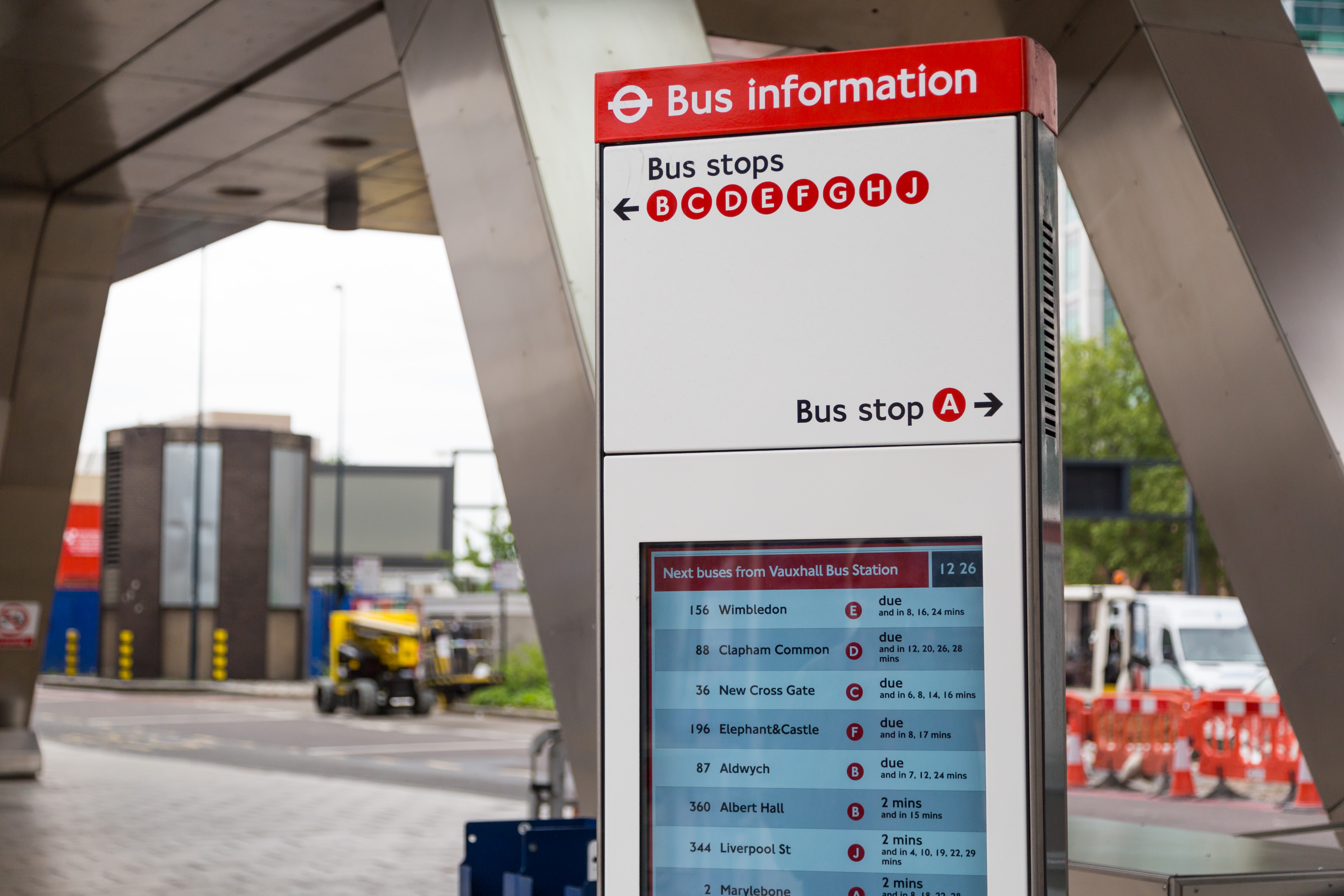
Fare Capping and Daily Limits
A significant advantage of using Oyster or contactless cards is daily and weekly fare capping. This means that once you’ve reached a certain spending limit within a day or week, you won’t be charged for additional journeys for the rest of that period. The daily cap for bus-only travel is generally lower than the Tube or rail cap, making buses a budget-friendly option for frequent travelers. This feature ensures that you get the most value out of your travel budget, particularly if you’re planning to make multiple journeys within the same day.
Step-by-Step Guide to Using London Buses
If you’re unfamiliar with London buses, knowing how to board, travel, and exit can make the experience smoother.
How to Board and Exit the Bus
- Boarding from the Front Door: Buses in London have designated entry and exit points, with the front door reserved for boarding. When you enter, tap your Oyster or contactless card on the card reader next to the driver to pay for your journey.
- Exiting Through the Rear or Middle Door: London buses typically have multiple doors, with the rear or middle doors designated for exiting. To signal that you want to get off, press the red “stop” button located near your seat well before your stop. The driver will then open the doors at the next stop, allowing you to exit safely.
Important Etiquette and Rules on London Buses
While using London buses, it’s essential to follow basic etiquette and rules. Standing passengers should move towards the back of the bus to make room for others. Priority seats near the front are reserved for those who need them, such as elderly or disabled passengers. Additionally, eating smelly foods and playing loud music are discouraged to ensure a pleasant experience for everyone.
Using Night Buses in London
Night buses are a lifeline for Londoners who need to travel after the Tube closes, with most routes running from midnight until the early morning hours.
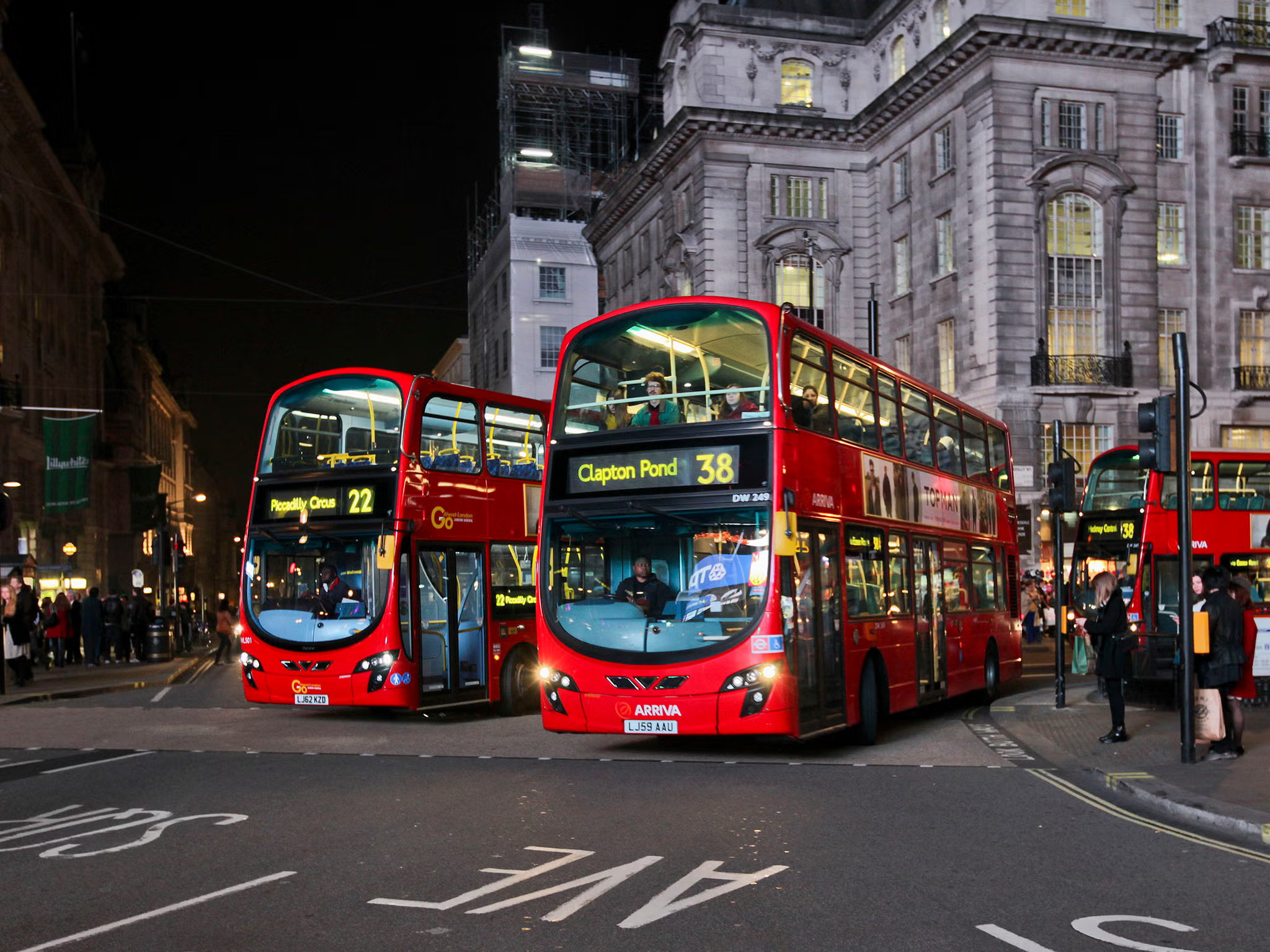
Night Bus Routes and Availability
Night buses are denoted by an “N” before the route number, like N15 or N207. While many routes follow the same path as daytime buses, some provide additional coverage, linking central London to suburban areas that aren’t covered by 24-hour services. Timetables for night buses can be found on the TfL website and apps like Citymapper and Google Maps.
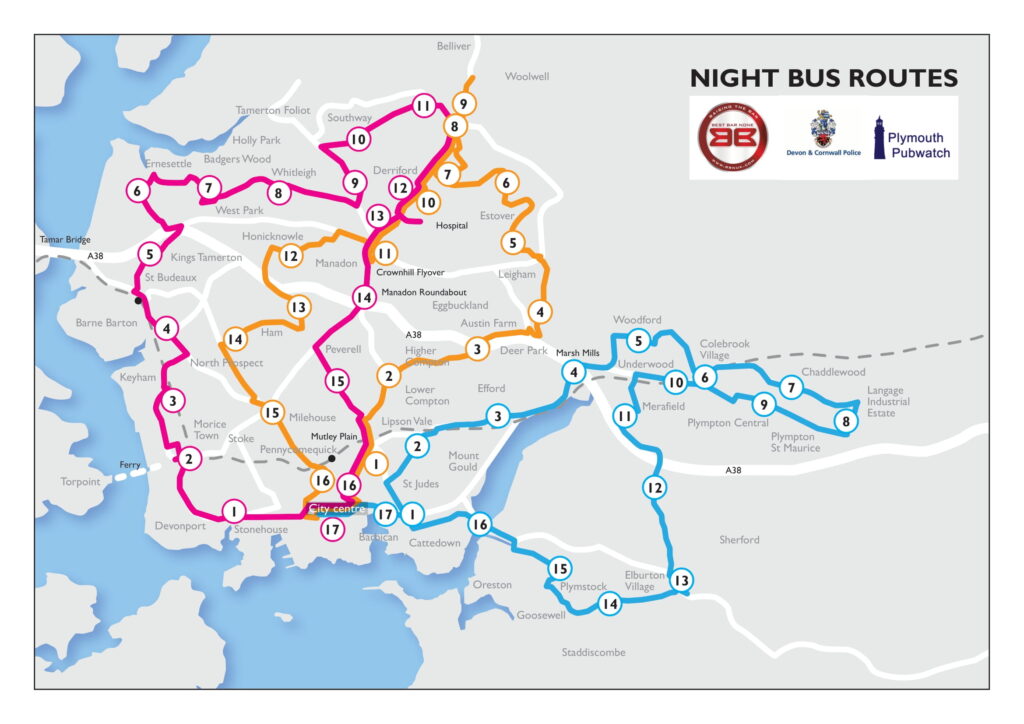
Tips for Safe Night Bus Travel
For safety, sit near the driver or with other passengers, especially if you’re traveling alone. Night buses can be busier on weekends, so expect potential crowds. It’s also wise to plan your route ahead and check the arrival times in advance, as night buses may have longer wait times compared to daytime services.
Accessibility and Safety on London Buses
London’s buses are designed to be accessible for all. Every bus has step-free access, ensuring that individuals with disabilities, parents with strollers, and those with mobility issues can board and exit without difficulty.
Facilities for Disabled Passengers
Buses are equipped with low floors and wheelchair ramps, and each bus has a designated space for one wheelchair or mobility scooter. In addition, priority seating is available near the front of the bus for passengers who need it. The audio-visual announcements onboard help visually impaired passengers stay informed about upcoming stops.
Safety Tips for Bus Travel
To ensure a safe experience, remain alert and mindful of your belongings, especially during peak hours or while traveling at night. London buses are equipped with CCTV cameras for additional security, which helps deter theft and monitor activity. It’s best to avoid loud conversations or drawing unnecessary attention, especially on night buses. Always stay seated while the bus is moving, and if standing, hold onto the handrails.
Popular London Bus Routes for Sightseeing
Several bus routes in London are perfect for sightseeing, as they cover routes that pass by popular tourist attractions and provide great views from the upper deck.
Recommended Routes for Tourists
- Route 9: This route covers notable landmarks like Hyde Park, Kensington Palace, and Trafalgar Square. It’s a great route for those wanting to see some of London’s royal sites and expansive green spaces.
- Route 11: Known as one of the best routes for tourists, Route 11 passes by key locations like Big Ben, the Houses of Parliament, Trafalgar Square, and the Tower of London, offering a quick overview of central London’s most famous sites.
- Route 15: Another excellent option for history buffs, this route takes you past the Tower of London, St. Paul’s Cathedral, and through the heart of the financial district. It also features a few heritage Routemaster buses on weekends, which can add a bit of nostalgia to your journey.
Sightseeing and Scenic Views from the Bus
To get the best views, sit on the upper deck of the bus, preferably near the front. You’ll have a panoramic view of the city and can capture some great photos of London’s landmarks. Traveling by bus also lets you experience the city at street level, giving you a different perspective than you would get from the Underground.
Commonly Used Bus Apps and Resources
In addition to the TfL website, several other mobile apps can make traveling by bus in London easy and stress-free.
Citymapper
Citymapper is widely regarded as one of the best navigation apps for London, especially for bus travel. It provides detailed route planning, real-time updates, and even includes a “GO” mode, which guides you step-by-step to your destination. The app also features disruption alerts, ensuring you’re always aware of any delays or changes in service.
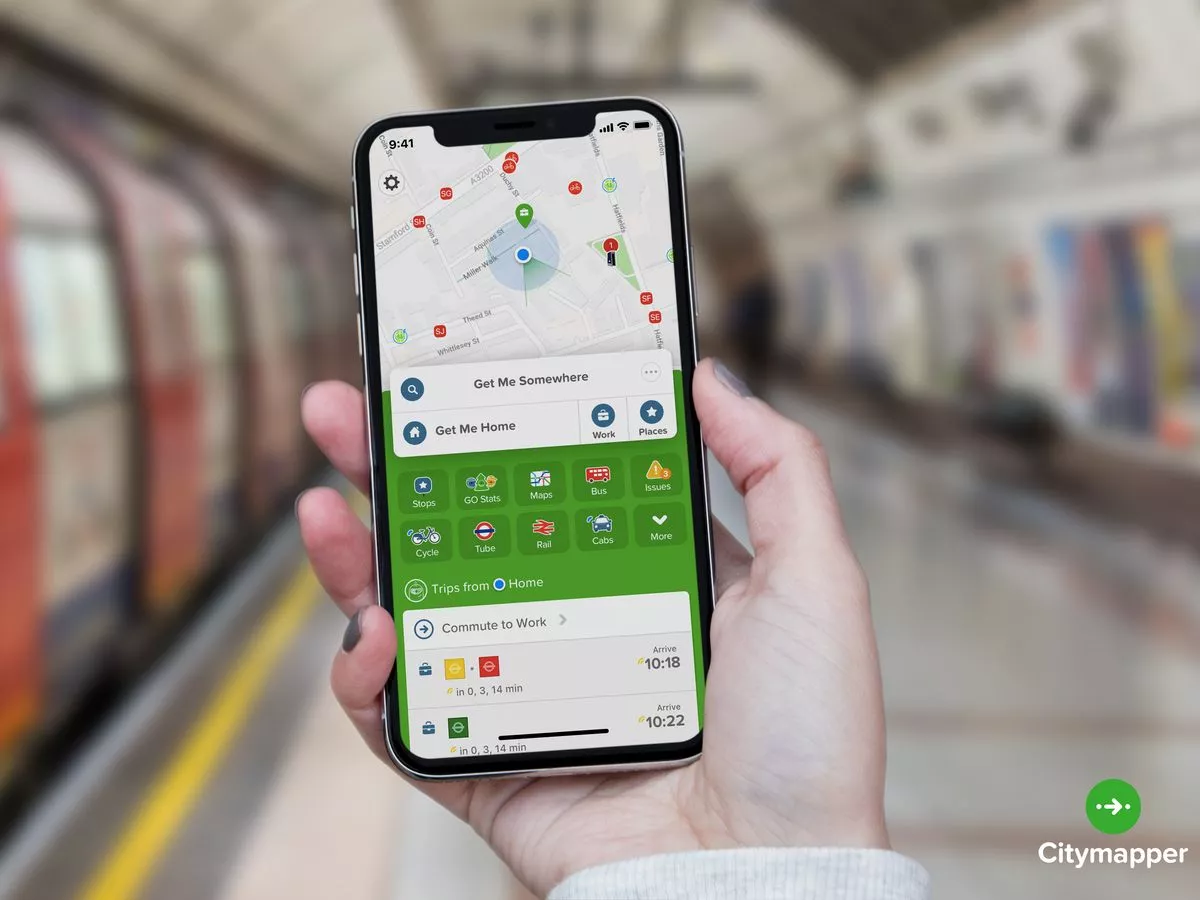
TfL Go App
TfL’s official app, TfL Go, is designed to complement the entire TfL network, including buses. It offers real-time bus arrivals, route planning, and service updates. You can also save your favorite routes and access offline maps, making it a valuable tool if you need official information or prefer a London-specific app.
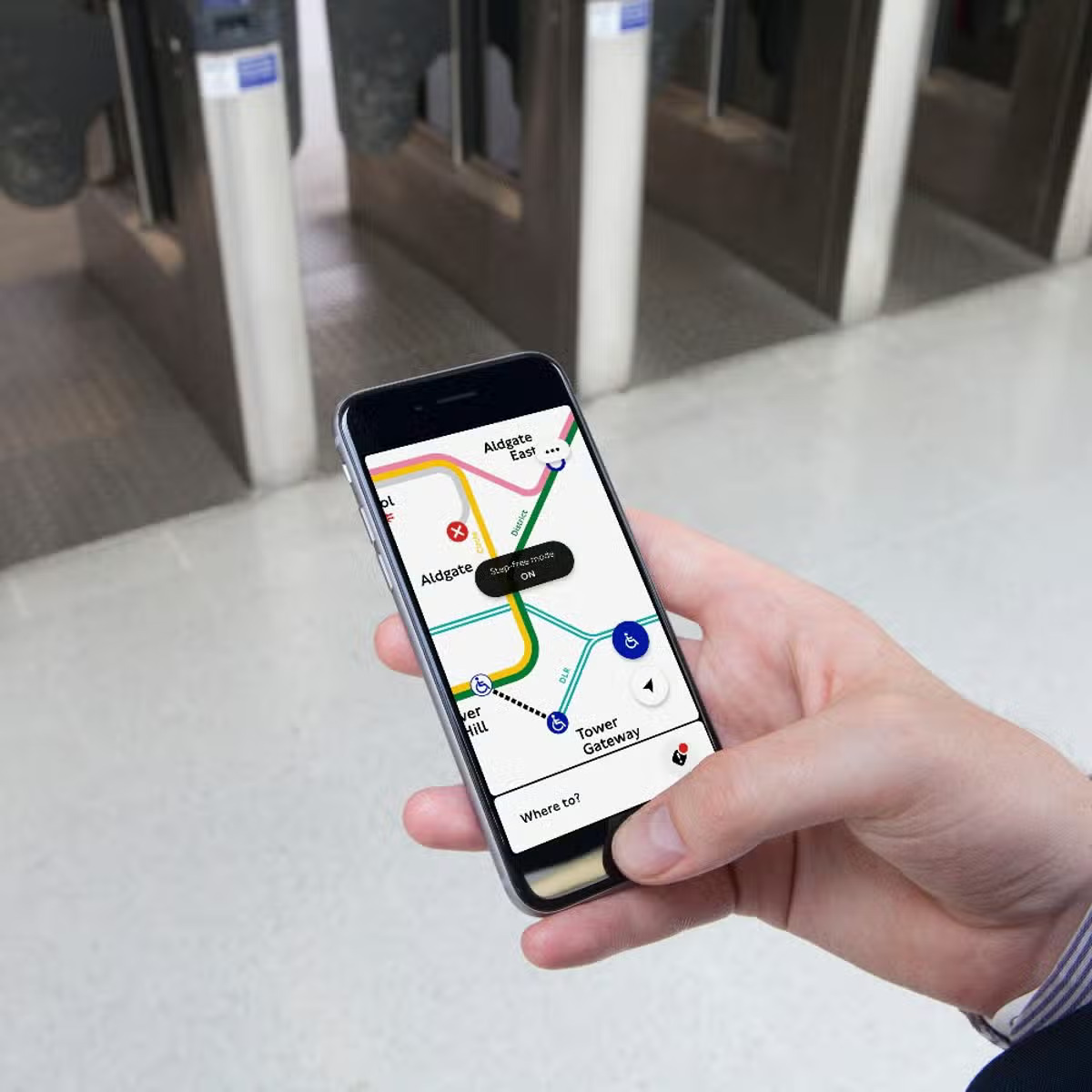
Google Maps for Bus Travel
Google Maps is a versatile option that most travelers will find familiar. It provides bus routes, real-time arrival estimates, and walking directions to nearby stops. Google Maps also features multi-language support, making it ideal for international visitors. If you’re already using Google Maps for general navigation, it’s a great tool for getting around by bus as well.
Practical Tips for Using London Buses
To make the most of your London bus experience, keep these practical tips in mind:
How to Check Bus Schedules in Real Time
Real-time bus information is available on TfL’s website, the TfL Go app, and most bus stop displays, which show upcoming arrivals and routes. This ensures you can time your journey accurately and avoid unnecessary waiting.
What to Do If You Miss Your Bus
Missing a bus is common, but you can easily find out when the next bus is due using a travel app. London buses are frequent, especially on popular routes, so another bus is typically just minutes away. In case of delays, you can also use apps to find alternate routes or nearby stops with similar services.
Tips for Tourists on Saving Money
For visitors, using a Visitor Oyster card or contactless payment can save money, especially with daily fare capping in place. Planning your journey in advance and opting for a Bus & Tram Pass can also be economical if you’re staying for a longer period and plan on travelling extensively within London.
Conclusion
London’s bus system is a fantastic way to explore the city on a budget, with extensive coverage, affordable fares, and the opportunity to enjoy the sights from the comfort of a double-decker bus. By understanding how to plan your journey, use payment options, and take advantage of apps, you can navigate the city with ease. Whether you’re a tourist looking to see the sights or a local getting around town, London buses offer a convenient, scenic, and safe travel option.


